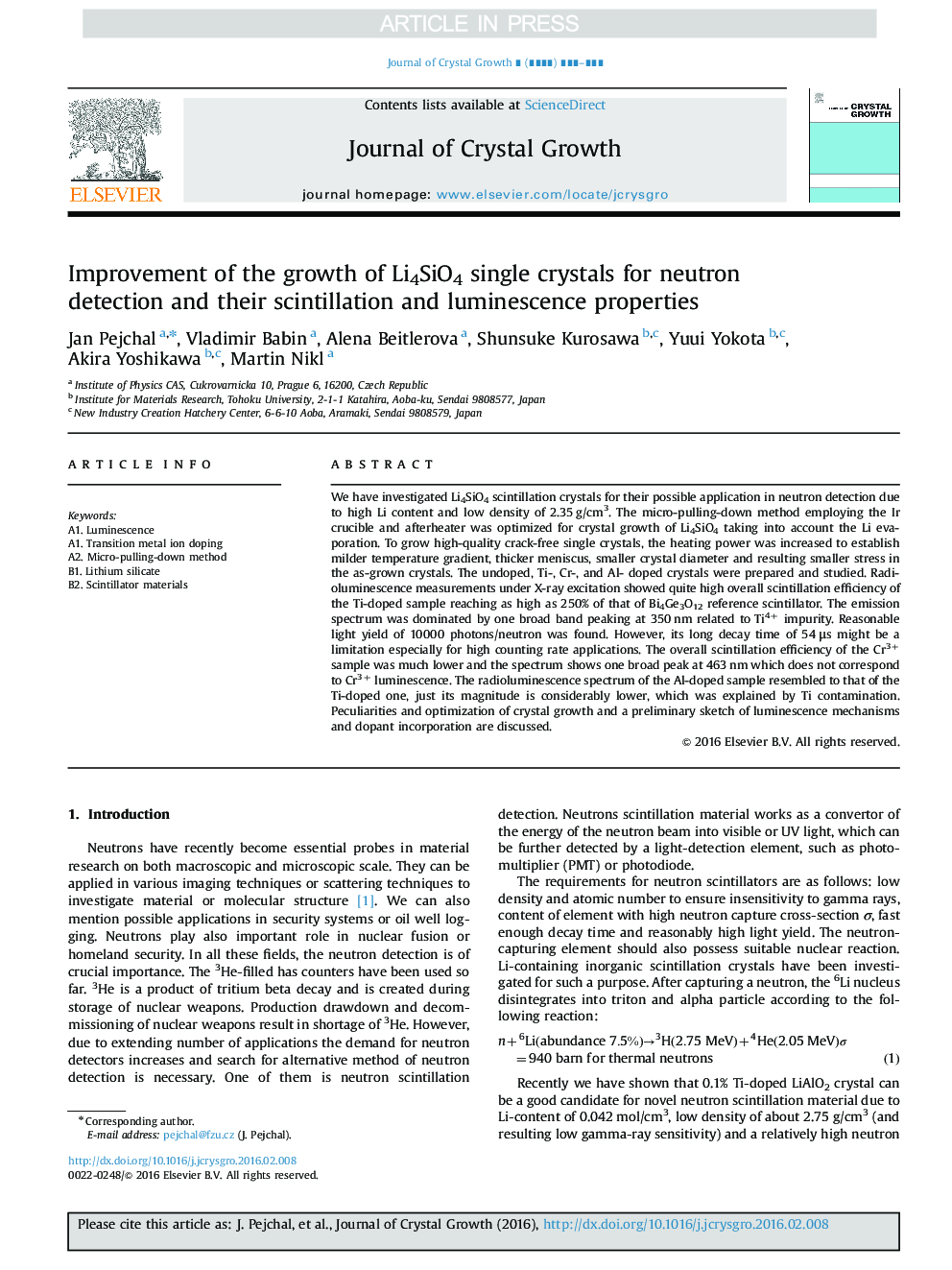| Article ID | Journal | Published Year | Pages | File Type |
|---|---|---|---|---|
| 5489722 | Journal of Crystal Growth | 2017 | 8 Pages |
Abstract
We have investigated Li4SiO4 scintillation crystals for their possible application in neutron detection due to high Li content and low density of 2.35 g/cm3. The micro-pulling-down method employing the Ir crucible and afterheater was optimized for crystal growth of Li4SiO4 taking into account the Li evaporation. To grow high-quality crack-free single crystals, the heating power was increased to establish milder temperature gradient, thicker meniscus, smaller crystal diameter and resulting smaller stress in the as-grown crystals. The undoped, Ti-, Cr-, and Al- doped crystals were prepared and studied. Radioluminescence measurements under X-ray excitation showed quite high overall scintillation efficiency of the Ti-doped sample reaching as high as 250% of that of Bi4Ge3O12 reference scintillator. The emission spectrum was dominated by one broad band peaking at 350 nm related to Ti4+ impurity. Reasonable light yield of 10000 photons/neutron was found. However, its long decay time of 54 μs might be a limitation especially for high counting rate applications. The overall scintillation efficiency of the Cr3+ sample was much lower and the spectrum shows one broad peak at 463 nm which does not correspond to Cr3+ luminescence. The radioluminescence spectrum of the Al-doped sample resembled to that of the Ti-doped one, just its magnitude is considerably lower, which was explained by Ti contamination. Peculiarities and optimization of crystal growth and a preliminary sketch of luminescence mechanisms and dopant incorporation are discussed.
Related Topics
Physical Sciences and Engineering
Physics and Astronomy
Condensed Matter Physics
Authors
Jan Pejchal, Vladimir Babin, Alena Beitlerova, Shunsuke Kurosawa, Yuui Yokota, Akira Yoshikawa, Martin Nikl,
